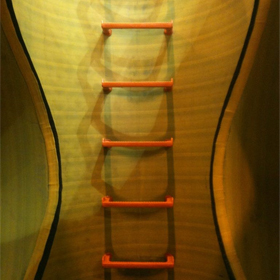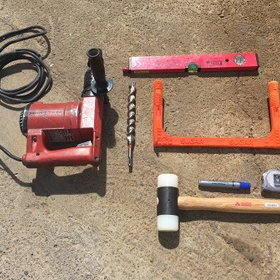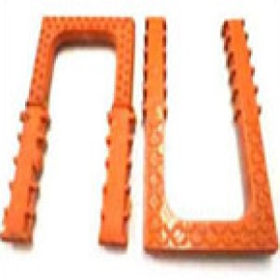PVC Rungs
Footsteps are an integral component of the present design of water tanks and manholes. Deesawala PVC Rungs are an excellent alternative to conventional Mild steel and Cast Iron Footsteps. Mase Manhole steps are designed and constructed to overcome the issues of corrosion and rust. Its unique design features designs at the top to keep the steps to be firmly gripped, thereby preventing slippy. It is made of iron rods are welded according to the size required and then sealed with Polypropylene material to give around 5mm thick.
Manhole reinforced with PVC and steel safety steps are highly recommended by a lot of Architects across India. It is extensively used by builders and contractors to ensure more security. PVC Footsteps, also known as rungs, are mostly used in Manhole water tanks, s and ducts to allow for ease of excess and regular maintenance. We offer ready-to-use stock Footsteps to make it easy to construct.
- PVC Encapsulated Rungs is produced in accordance with IS norms.
- PVC Rungs is made up from an MS rod size: 8mm,10mm and 12mm
- PVC Encapsulated Rungs guarantee that the material is made from 100% virgin PVC material
- PVC Rungs Standard Size of 263 x 164, with the desired rod thickness required by the customer
- Available color orange/black
- These PVC Steps for feet Steps are widely utilized in the work of Civil Contractors in underground / overhead water tanks, sewerage manholes multi-story buildings, as well as many more water filling sites.
In 1995, we established Our firm Deesawala Rubber Industries; a company that offers its customers an extensive range of products that are related to rubber. We have established a leading place within the industry, by serving our customers all over the world. Made from high-quality rubber that is sourced from certified vendors of the market our products are produced according to the standard guidelines of the market.
Step 1.
With the aid of using the Bubble Level Rule, we mark the points of the rod where the step is to be put in, using as an example the central point of every rod.
Step 2.
Repeat the procedure for every manhole, leaving a distance of 250 millimeters between the irons used for the step.
Step 3.
After the marks are created, we drill using the concrete or corrugated steel drill bit that is 25 millimeters diameter up to a depth of 850 millimeters. This leaves an adequate hole to accommodate the insertable section in our manhole step.
Step 4.
The rung is hit by a series of firm strikes at the sweet areas. Once we have it fixed, we'll hit the sweet spots until we have reached the thickness of the insertion is leaving only the round or rectangular portion of the step is apparent.
Step 5.
The manhole step ladder waiting to use. If the installation is correct the rungs can be able to withstand forces of tensile greater than 800 kilograms.






